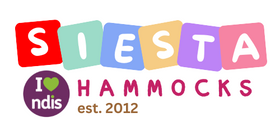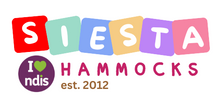Is a Baby Hammock Good for a Baby’s Back? Here’s the Honest Truth!
Introduction
A baby hammock is a fabric sleep surface suspended from a sturdy frame, creating a gentle, cradling motion. Think of it like a cozy little cocoon that hugs your baby and mimics the womb’s rocking movement.
✔ Many parents love them because they soothe fussy babies and help little ones doze off faster.
✔ Some hammocks are even designed to reduce reflux by keeping babies in a slightly elevated position.
But… while they look dreamy and snug, what do they do to your baby’s spine? Let’s talk science! 🔬
Table of Contents
- What is a Baby Hammock?
- Does a Baby Hammock Support Spinal Health?
- The Pros & Cons of Baby Hammocks
- Are Baby Hammocks Safe for Sleeping?
- Are Baby Hammocks Safe for Newborns?
- Better Alternatives for Healthy Baby Sleep
- Customer Story: A Life-Changing Experience
- Final Verdict: To Hammock or Not to Hammock?
What is a Baby Hammock? 🌿🛏️
A baby hammock is a fabric sleep surface suspended from a sturdy frame, creating a gentle, cradling motion. Think of it like a cozy little cocoon that hugs your baby and mimics the womb’s rocking movement.

Does a Baby Hammock Support Spinal Health? 🦴
Newborns are born with a C-shaped spine (called primary kyphosis), which gradually develops into the adult S-shape curve over time. The key to healthy spinal growth? A firm, supportive sleep surface that allows natural movement as they develop.
👍 Why Some Say Hammocks Are Good for Baby Backs:
✔ Mimics the womb – Helps newborns transition smoothly from the belly to the outside world.
✔ Gentle incline – Some believe it reduces reflux and colic by elevating the baby’s head slightly.
✔ Soothing motion – The gentle bounce can make babies feel secure and fall asleep faster.
👎 Why Experts Say “Maybe Not”:
❌ Too much curvature? – Some hammocks create an excessive bend in the spine, which may not support proper development.
❌ Not enough firmness – Babies need a firm surface to prevent spinal misalignment—hammocks, by nature, are soft and curved.
❌ Risk of positional issues – If babies stay curled up too much, it may affect natural spinal straightening.
🩺 Pediatrician Take:
According to safe sleep guidelines, babies should sleep on a firm, flat surface—which baby hammocks don’t always provide.
The Pros & Cons of Baby Hammocks ⚖️

✅ Pros:
✔ Soothes restless babies – The gentle movement mimics a parent’s rocking arms.
✔ May help reflux – The slight incline can prevent spit-ups and ease digestion.
✔ Cocoon effect – Feels safe and snug, reducing startle reflexes that wake babies up.
❌ Cons:
❌ Not great for spinal alignment – A hammock isn’t firm or flat, which may affect posture.
❌ Can become unsafe as babies grow – Rolling babies can shift into risky positions inside the hammock.
❌ Not approved for long-term sleep – Safe sleep guidelines recommend cribs or bassinets instead.
Are Baby Hammocks Safe for Sleeping? 🛑❌
According to Red Nose Australia and the American Academy of Pediatrics (AAP):
🚼 The safest sleep position for a baby is:
✔ On their back.
✔ On a firm, flat mattress.
✔ In a crib or bassinet with no pillows or loose bedding.
Baby hammocks don’t meet these criteria, which means they shouldn’t be used for overnight sleep.
👉 Best use for baby hammocks?
✅ Short, supervised naps when you need a quick break.
✅ A cozy chill-out spot while you're nearby.
✅ For newborns only—not once babies start rolling or moving around more!
Better Alternatives for Healthy Baby Sleep 🏆💤
If you’re looking for safer sleep solutions that still offer comfort and gentle motion, here are some baby-friendly alternatives:

✅ 1. Rocking Bassinet
✔ Provides the same soothing motion but with a firm, supportive mattress.
✔ Meets safe sleep guidelines.
✅ 2. Baby Loungers (For Supervised Naps Only!)
✔ Cozy and snug like a hammock, but without the excessive curve.
✔ Must be used under supervision only.

✅ 3. Adjustable Recline Sleepers
✔ Keeps babies in a safe, slightly inclined position for reflux relief.
✔ More structured than a hammock, offering better back support.
🚼 Looking for a safe, NDIS-approved baby sleep solution? Check out our top-rated baby hammocks and alternatives!
Customer Story: A Life-Changing Experience
Emma, a first-time mum from Melbourne, struggled with soothing her colicky newborn.
"I felt trapped—holding my baby all day while trying to do housework. But when I started using a baby hammock, everything changed. My baby calmed down instantly, and I finally had my hands free!"
Final Verdict: To Hammock or Not to Hammock? 🤔
So… is a baby hammock good for your baby’s back? The answer is yes and no!
✅ Great for short naps & calming fussy babies.
❌ Not the best choice for long-term sleep.
✅ Works well for newborns, but not once they start moving more.
❌ Not recommended by pediatricians for overnight use.
🎯 The Best Approach?
Soothing and short naps in a baby hammock = yes, but for long-term spinal health and safety’s sake, time spent in there should be swapped out in the long run for a crib, bassinet, or rocking sleeper.
🔥 Looking for the best of both worlds? See all Our Top-Ranked Sleep Solutions that KEEP your Baby Safe, Comfy & Well Rested!!
















Leave a comment